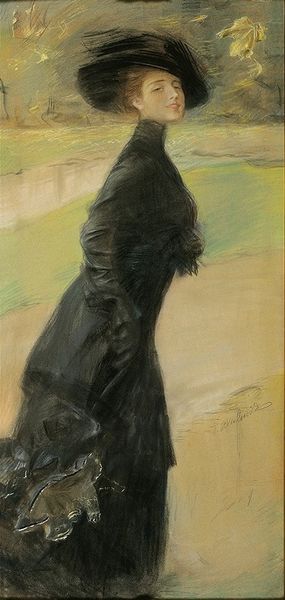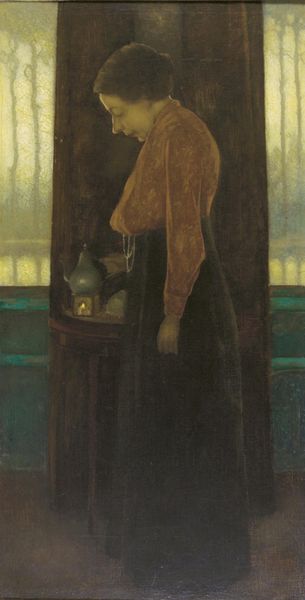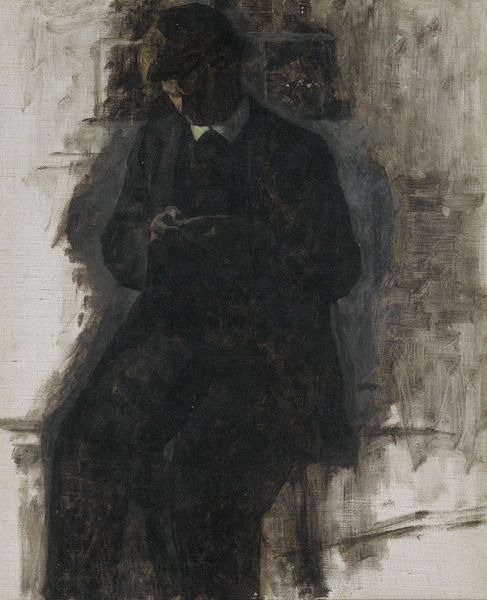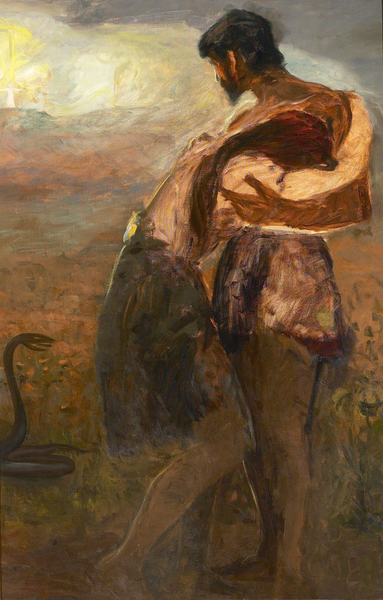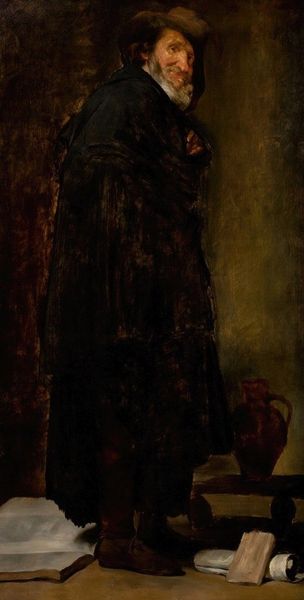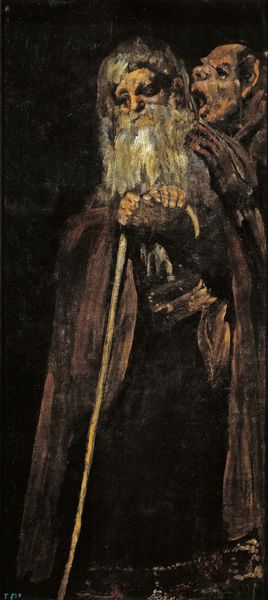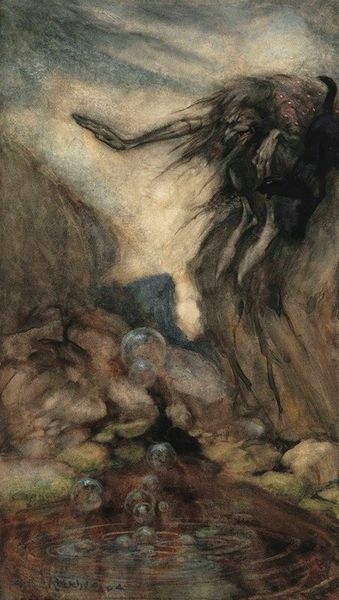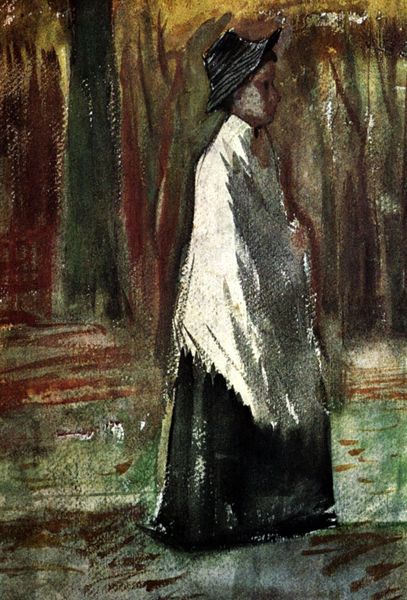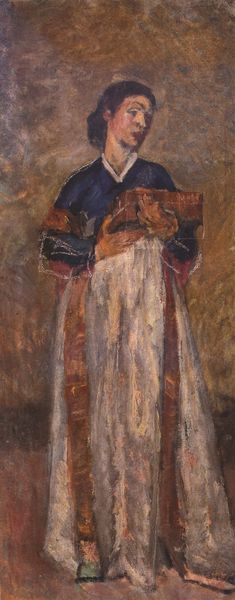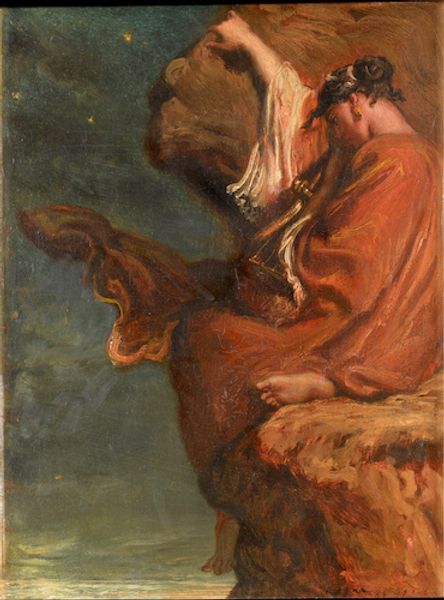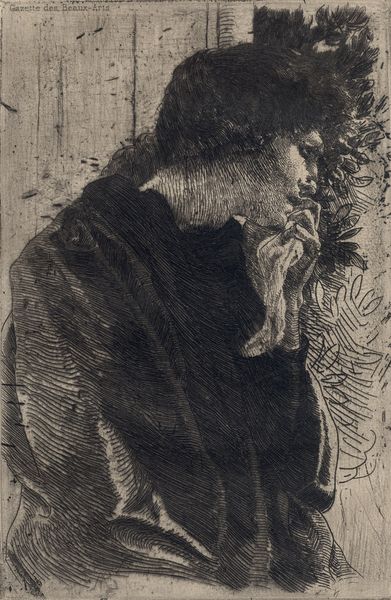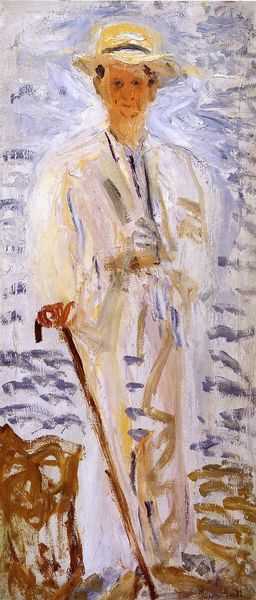
Copyright: Public domain
Editor: Walter Crane’s "Winter," painted in 1870 using oil on canvas, features a lone figure against a somber landscape. I'm struck by the way the wind seems to buffet her, emphasizing a sense of vulnerability and resilience all at once. What narratives do you see woven into this piece? Curator: I see Crane using the symbolism of winter, often associated with decline and hardship, to perhaps comment on the social conditions of his time. Consider the Industrial Revolution raging – were certain segments of the population rendered as vulnerable as this lone figure? Does the blowing cloak represent not only environmental but social forces at play? Editor: That's a powerful interpretation! I hadn’t considered that connection. So, beyond just a literal representation of winter, you see it acting as a commentary on societal pressures? Curator: Precisely. And look at the gaze; it's downcast. The weight of winter, perhaps mirroring the burden carried by those marginalized or struggling. What about the romanticized landscape behind the figure? Is it really that picturesque when you view it with that woman’s experience front and center? Editor: That’s fascinating. By placing the figure so prominently in the foreground, almost obscuring the "beauty" of the landscape, Crane redirects our attention. It is thought-provoking how visual art can act as social critique and historical documentation. Curator: Absolutely! Art isn't made in a vacuum. By examining pieces like "Winter" through lenses of social and historical context, we discover potent dialogues on gender, class, and the lived experiences of those often overlooked. Editor: Thank you – looking at it that way really shifted my perspective. I will now be approaching historical artworks in ways that account for intersectionality, hopefully uncovering their profound hidden meanings.
Comments
No comments
Be the first to comment and join the conversation on the ultimate creative platform.
